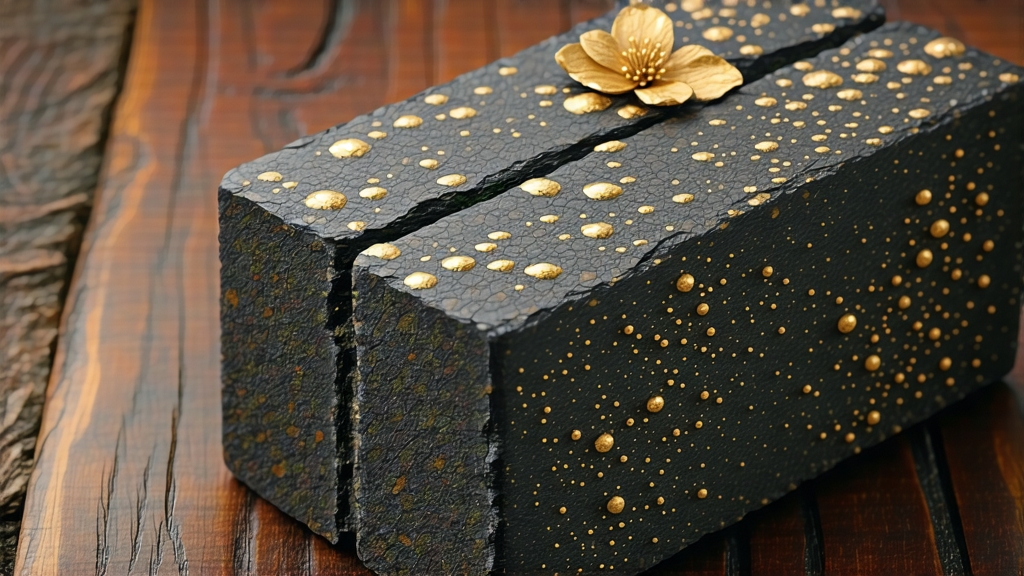
Among the six great chromatic families of Chinese tea, dark tea (heicha) is the least understood abroad, yet it once lubricated the wheels of Central-Asian commerce and still nourishes the digestion of millions. Within this family, Fu brick tea—named after the former county of Fuxian in Shaanxi province—occupies a singular throne. It is the only tea deliberately inoculated with a microorganism that blooms into visible golden specks, nicknamed “golden flowers” (jin hua). These flowers are not decorative; they are living proof of a slow metamorphosis that turns rough leaf into mellow medicine, and they give Fu brick its celebrated chestnut-sweet aroma and ruby-black liquor. This article invites the global reader to travel from the Tang dynasty horse markets to a modern gongfu tray, unpacking the history, craft, and sensory code of Fu brick tea.
-
Historical footprints
Tea compressed into bricks for easier transport on camelback appears in Tang records (618-907 CE), but the “Fu” style crystallized during the late Ming along the Tea-Horse Road. Shaanxi merchants bought coarse summer leaf from Hunan’s Anhua county, steamed it, pressed it into brick molds, and ferried it westward. Along the freezing journey the tea underwent months of accidental fermentation, emerging darker, smoother, and suddenly prized by nomadic Tibetans and Mongolians for its ability to cut dairy fat and supplement vitamins. By 1860 the Qing court had granted Fuxian’s traders an official license, and the bricks—stamped with the Chinese character “Fu” for good fortune—became a currency in themselves. Today the same character is still branded onto every brick, a talismanic link to caravans that once measured distance in tea rather than miles. -
Terroir and leaf grade
Authentic Fu brick begins in the mist-locked valleys of Anhua, where the Zi River’s granite bed filters water rich in selenium and fluorine. Bushes here are mostly seed-propagated descendants of the original Da Ye (big-leaf) landrace, thriving at 300-800 m under a quilt of cloud that slows photosynthesis and thickens cell walls—ideal for the long microbial marathon ahead. Only the third and fourth mature leaves are plucked, tough enough to survive repeated steaming without disintegrating, yet flush with polysaccharides that Eurotium cristatum—the golden-flower mold—loves to nibble. -
Crafting the golden flower
Production unfolds in four acts, each calibrated to invite the fungus without inviting decay.
a) Pan-firing & rolling: Fresh leaf is quickly heated to 180 °C for three minutes to kill surface microbes, then rolled for 45 minutes to rupture cells and release sticky juices.
b) Piling: The damp leaf is heaped 70 cm high under linen. Internal temperature climbs to 55 °C within 24 h, triggering auto-oxidation and caramelization. Masters “turn” the pile every three hours, aerating and evenly moistening, until the leaf turns ochre and smells of raw cocoa.
c) Brick-forming & inoculation: The leaf is steamed for 90 seconds, then packed into five-kilogram fir boxes lined with cotton paper. A measured spray of Anhua well-water introduces resident spores; the boxes are pressed under 50-ton hydraulic plates for precisely 15 minutes, achieving a density of 1.1 g/cm³—tight enough to retard oxygen, loose enough to let the fungus breathe.
d) Flowering & drying: Bricks are wheeled into a “flower room” kept at 28 °C and 75 % RH. Within 48 h the first yellow dots appear; over 12-20 days they coalesce into a golden velvet. When the count reaches 500 000 CFU per gram—verified by sampling cores—the bricks are moved to a 45 °C drying hall for three days to fix the aroma and arrest further microbial activity. The result is a chocolate-brown block that rings like hard wood when tapped. -
De-coding the sensory profile
Western tasters often reach for Burgundy metaphors. The dry aroma is dried apricot and toasted sesame; the rinse awakens camphor and horse-saddle leather. First infusions yield a liquor the color of pomegranate seeds, with a texture simultaneously syrupy and brisk—what Chinese texts call “sweet after bitterness.” Mid-session notes drift toward honey-dripped walnut and a